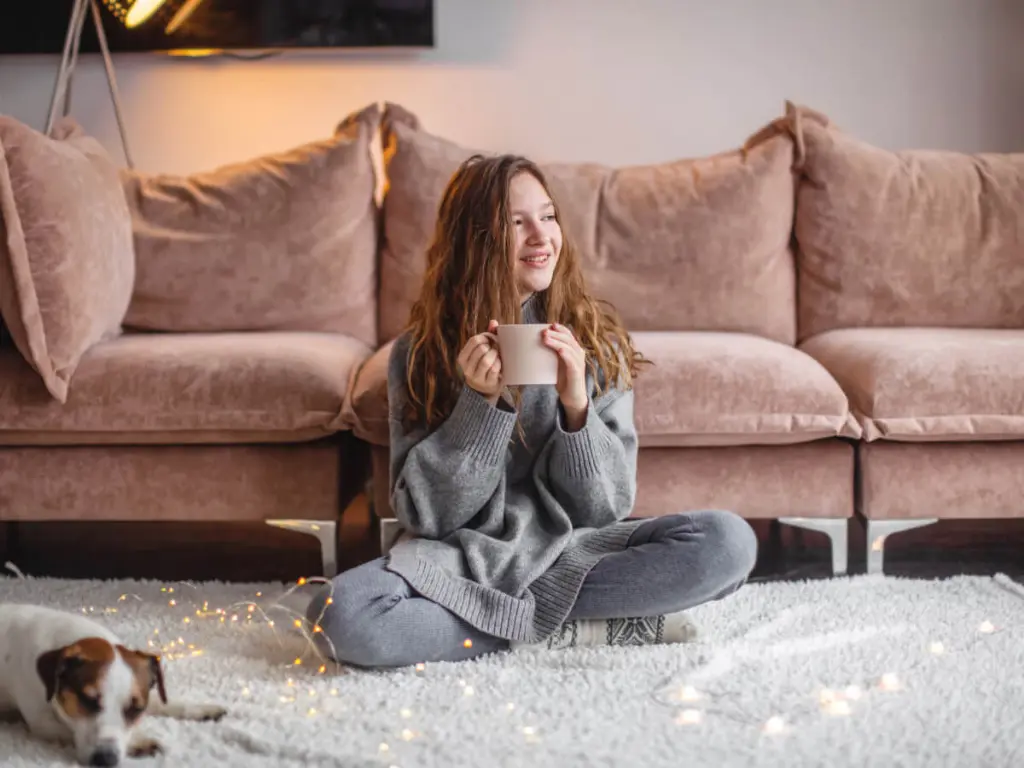Have you ever scrolled through Instagram and been captivated by images of clean, uncluttered spaces bathed in soft light? Or perhaps you’ve found yourself drawn to the cozy, hygge-inspired interiors that seem to exude a sense of calm and contentment? If so, you’ve likely encountered the global phenomenon of Nordic culture and its close companion, minimalism.
These concepts, once associated with specific geographical regions, have now permeated nearly every corner of the world, influencing everything from interior design to lifestyle choices. But what is it about Nordic culture and minimalism that has captivated so many? Let’s delve into the allure of these fascinating trends.
Understanding the Nordic Allure
The term “Nordic” encompasses a diverse range of countries, including Denmark, Finland, Iceland, Norway, and Sweden. These nations, known for their long winters, breathtaking landscapes, and unique cultural heritage, have collectively contributed to a global fascination. But why are we so drawn to the Nordic way of life? Several factors play a role:

The Power of Hygge
One of the most prominent aspects of Nordic culture that has captured the world’s attention is hygge, a Danish concept that embodies coziness, contentment, and well-being. Hygge is not just about aesthetics; it’s a feeling of warmth, connection, and enjoying the simple things in life.
See also What Makes American Culture So Influential Worldwide
What Makes American Culture So Influential WorldwideThink of crackling fireplaces, soft blankets, warm drinks, and good company. This emphasis on comfort and creating a relaxing atmosphere resonates deeply, especially in our increasingly fast-paced world. We yearn for that sense of peace and simplicity that hygge promises.
Nature and Outdoor Living
Nordic countries are renowned for their breathtaking natural beauty. From dramatic fjords and snow-capped mountains to lush forests and shimmering lakes, the landscape is a significant part of the Nordic identity. This connection to nature is reflected in the emphasis on outdoor activities, such as hiking, skiing, and foraging.
The Nordic lifestyle encourages us to spend time outdoors, to appreciate the natural world, and to find solace and rejuvenation in its beauty. This is attractive to those of us who spend much of our lives indoors and who seek to connect more with our natural world.
Strong Emphasis on Design
Nordic design is characterized by its functionality, simplicity, and aesthetic appeal. The focus is on clean lines, natural materials, and muted color palettes. This design aesthetic is not only beautiful but also practical and timeless. From furniture and architecture to fashion and art, Nordic design celebrates understated elegance and durability, making it highly desirable in our current, design-focused world.
See also Why French Culture is Synonymous with Art Fashion and Cuisine
Why French Culture is Synonymous with Art Fashion and CuisineSocial Welfare and Equality
Nordic countries consistently rank high in global happiness indices, often attributed to their strong social welfare systems, which promote equality, education, and access to healthcare. This emphasis on collective well-being and the support provided to citizens is a powerful draw for those who seek a more equitable and compassionate society. The stability and focus on societal good that characterizes many Nordic countries are something many people find very appealing.
The Minimalism Movement: A Counterpoint to Excess
While deeply rooted in Nordic culture, the concept of minimalism has evolved into a global movement of its own. Minimalism, at its core, is about intentional living with only the things that you need and value. It’s a conscious rejection of consumerism and a deliberate focus on what truly matters. This resonates with a world often overwhelmed with material possessions and endless marketing. Here’s a look at the key aspects of minimalism:

De-cluttering Physical Spaces
One of the most visible aspects of minimalism is the emphasis on decluttering and organizing our physical spaces. This often involves getting rid of excess belongings, simplifying our living environments, and creating more streamlined homes. The idea of having a cleaner, less cluttered home is appealing for many people. Less clutter equals less stress, and the process of minimizing can be therapeutic for some.
Prioritizing Experiences over Things
Minimalism encourages us to shift our focus from acquiring material possessions to investing in experiences, relationships, and personal growth. This emphasis on living fully and intentionally challenges the traditional focus on accumulating wealth and objects. Instead, minimalists focus on spending time on things that are fulfilling and rewarding, leading to greater contentment overall.
Conscious Consumption
Minimalism is closely tied to conscious consumption. It encourages us to think carefully about our purchases, to buy fewer but higher quality products, and to be mindful of our impact on the environment. This commitment to sustainability and ethical consumption resonates with an increasing awareness of the need to protect our planet and our communities. The idea of being a more responsible and conscious consumer is one of the pillars of the minimalist movement.
Mental Clarity and Well-being
Beyond the tangible benefits, minimalism has a profound impact on mental well-being. By simplifying our lives and removing distractions, we can create more space for clarity, creativity, and self-reflection. The reduction in stress and anxiety that often accompanies a clutter-free lifestyle is very compelling. The focus on fewer things, and more experiences, can actually free up time and energy that might be otherwise spent maintaining and managing possessions.
The Intertwined Relationship: Nordic Culture and Minimalism
While not entirely synonymous, Nordic culture and minimalism share a natural affinity. The values inherent in Nordic design, such as simplicity, functionality, and appreciation for natural materials, align perfectly with the core principles of minimalism.
The Nordic emphasis on hygge complements the minimalist focus on intentional living and creating calming environments. These two concepts have become so intertwined because they share many of the same values.

Shared Values
Both Nordic culture and minimalism value:
- Functionality: Emphasis on items and spaces that serve a practical purpose.
- Simplicity: A preference for uncluttered spaces, clean lines, and minimal decoration.
- Quality: A focus on durable, well-made items that last.
- Nature: A deep connection with the natural world and use of natural materials.
- Sustainability: A commitment to conscious consumption and environmental awareness.
The Combined Influence
The combination of Nordic culture and minimalism has created a powerful movement that transcends geographical boundaries. We see this influence in many aspects of our lives:
- Interior Design: Clean lines, natural materials, muted color palettes, and a focus on functionality.
- Fashion: Minimalist wardrobes with versatile, high-quality pieces.
- Lifestyle: Intentional living, prioritizing experiences, and simplifying daily routines.
- Consumer Choices: A conscious shift towards sustainability and ethical purchasing.
Why the Obsession?
The worldwide obsession with Nordic culture and minimalism is not accidental. These trends offer an appealing alternative to our fast-paced, consumer-driven world. They promise a simpler, more intentional way of life, one that emphasizes well-being, connection, and purpose. Here are some specific reasons the obsession persists:
A Response to Modern Challenges
In an age of constant stimulation, digital distractions, and social pressure, many people are seeking a more peaceful and authentic way of life. Both the Nordic way of life and minimalism offer a refuge from the chaos and help to create a sense of calm and control. This reaction to modern life is part of the reason both trends are so globally popular.
A Desire for Authenticity and Connection
The emphasis on human connection and community that is central to Nordic culture is a powerful draw in our increasingly digital world. The focus on relationships and experience instead of material goods is something that resonates with many people on a deeply personal level.
A Quest for Well-being and Happiness
The popularity of hygge and minimalist living reflects a growing desire for greater well-being and happiness. People are looking for ways to create more fulfilling lives, reduce stress, and find contentment in the present moment. Both approaches put well-being and mindfulness at their center, which is appealing to many who are not content with the status quo.
The Allure of Aesthetic Appeal
Let’s be honest, the aesthetics of both are exceptionally appealing. The clean, uncluttered look of minimalist spaces and the cozy, comfortable vibe of hygge interiors are very easy on the eye. The use of natural materials and the overall feeling of simplicity make these styles so visually captivating.
Incorporating Nordic and Minimalist Principles
You don’t need to live in Scandinavia or adopt a completely minimalist lifestyle to benefit from these philosophies. Here are some practical ways you can incorporate Nordic and minimalist principles into your own life:
- Declutter your space: Start by removing items you no longer use or need.
- Embrace natural materials: Opt for wood, linen, and wool in your home and wardrobe.
- Create a hygge corner: Set up a cozy space with soft lighting, blankets, and comfortable seating.
- Prioritize experiences: Make time for activities that bring you joy and connect you with others.
- Practice conscious consumption: Buy less, buy better, and consider the environmental impact of your purchases.
- Spend time in nature: Make an effort to get outside, whether it’s a walk in the park or a hike in the mountains.
- Slow down and savor: Be mindful of your daily routines, and take time to enjoy the simple moments.

The worldwide obsession with Nordic culture and minimalism is more than just a fleeting trend. It’s a reflection of our collective desire for simplicity, well-being, and a deeper connection with ourselves, each other, and the natural world.
These two approaches, while distinct, complement each other beautifully to offer us an approach to life that emphasizes calm, purpose, and well-being. By incorporating the principles of functionality, intentionality, and appreciation for the simple things, we can all create more fulfilling and meaningful lives, regardless of where we live.“`




